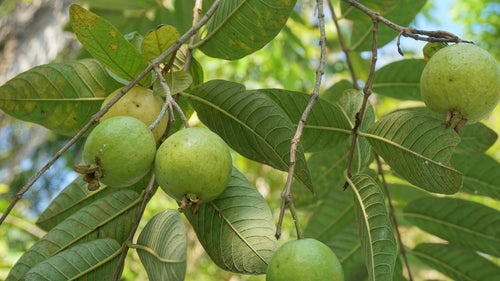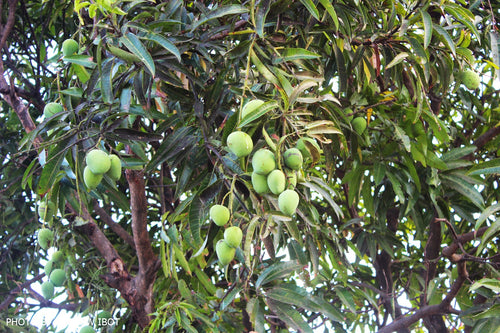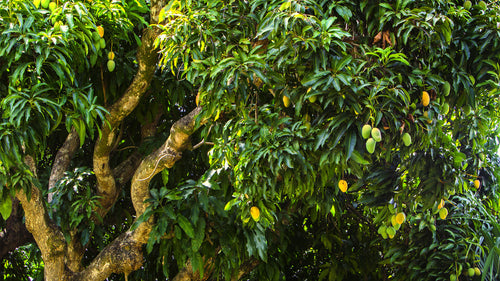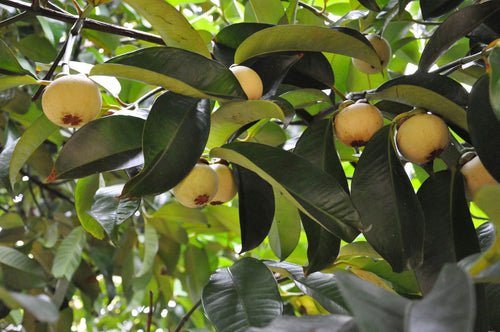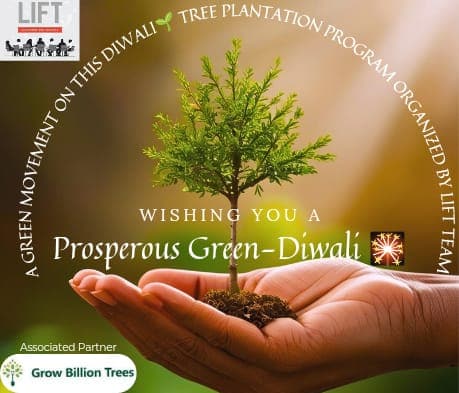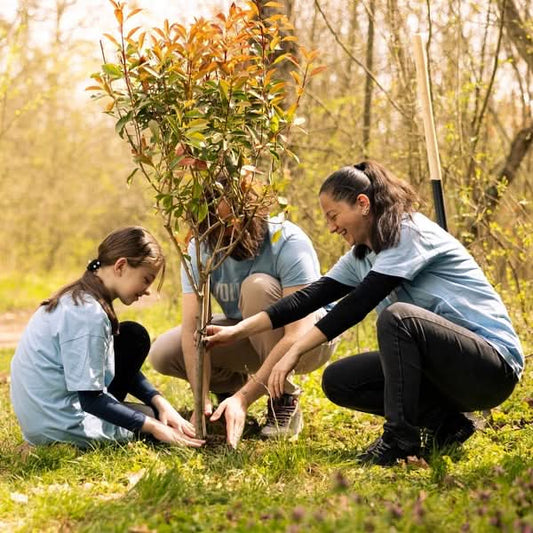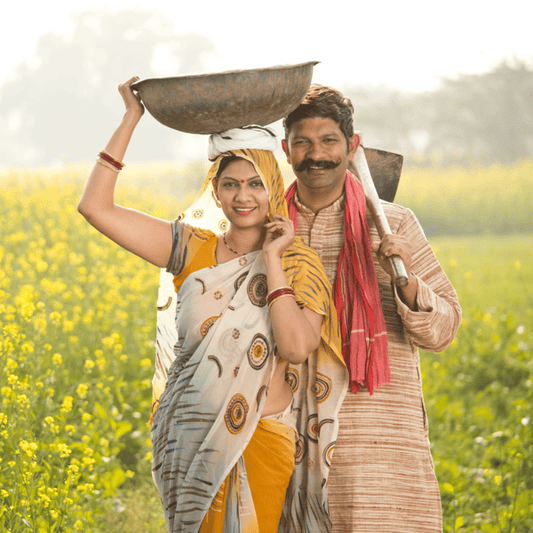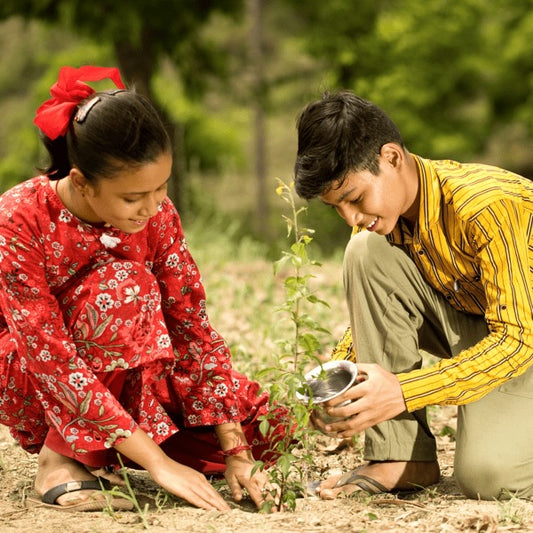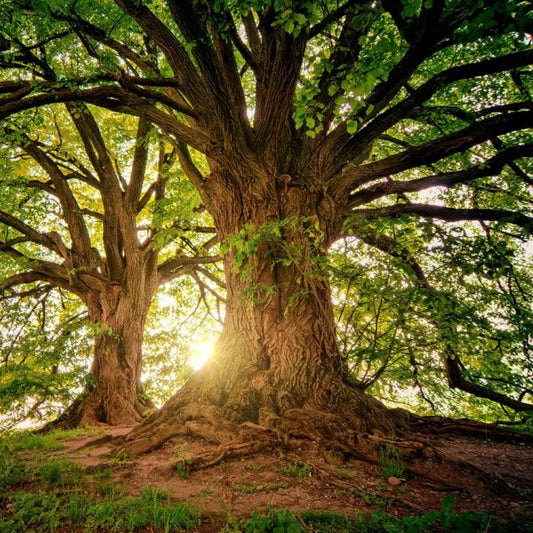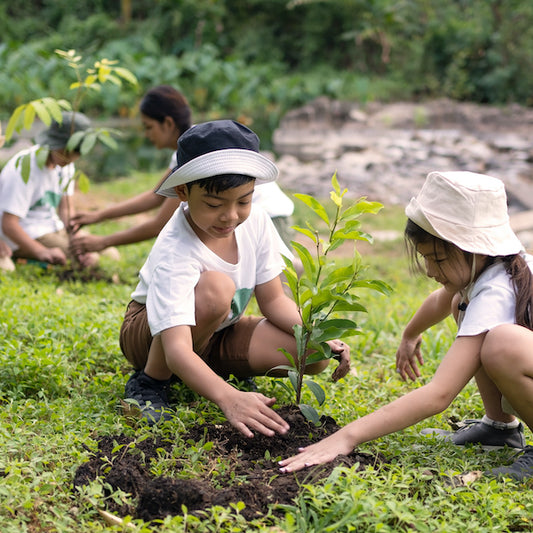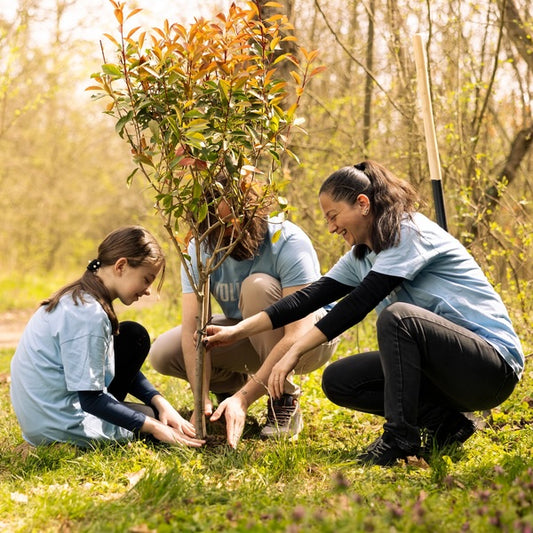Saagkala’s Green Gift: Agroforest Plantations for Clients
Saagkala, a name synonymous with timeless Indian craftsmanship and exquisite teakwood furniture, takes its commitment to nature a step further with it Read more
Digital Forest
Forest with 50 Trees planned
Want to plant your tree now?
Plant a Tree @ 299Trees Planted
Saagkala’s Green Gift: Agroforest Plantations for Clients
Saagkala, a name synonymous with timeless Indian craftsmanship and exquisite teakwood furniture, takes its commitment to nature a step further with its tree plantation initiative in the agroforest concept. This eco-friendly endeavor reflects Saagkala’s dedication to sustainability, celebrating the same natural resources that inspire its creations. As a gesture of gratitude to its valued clients, Saagkala plants trees in agroforests, blending environmental stewardship with community development. These trees not only enrich the environment but also support local farmers by enhancing biodiversity and improving soil health. By intertwining tradition and sustainability, Saagkala ensures that its legacy of nurturing nature transcends generations, much like its genuine teakwood masterpieces. Through this initiative, Saagkala empowers its clients to be part of a greener future, building a partnership rooted in shared values and a commitment to preserving India’s ecological heritage.
Tree Plantation Date
5th June 2024
Plantation Location
Sahayadri Van, Girvi, Satara, Maharashtra 415523
Trees Planted
Total Count: 50 Trees
Species Name: Mango, Guava
Forest Type: Agroforest
Saagkala, renowned for its timeless teakwood furniture that celebrates Indian craftsmanship, extends its legacy of sustainability through a thoughtful agroforest tree plantation initiative for its clients. This initiative involves planting trees in agroforests an innovative blend of agriculture and forestry where trees not only restore ecological balance but also support local farmers by enhancing biodiversity, enriching soil quality, and providing additional income opportunities. By dedicating trees to its clients, Saagkala symbolizes a shared commitment to a greener future, ensuring that the natural resources inspiring its creations are nurtured for generations to come. Through this initiative, Saagkala seamlessly intertwines environmental responsibility with the art of crafting enduring relationships.
Advantages Of Agroforest
Promotes Environmental Sustainability
Saagkala’s agroforest initiative helps restore ecological balance by increasing tree cover, reducing carbon dioxide levels, and combating climate change. By integrating trees into agricultural landscapes, it creates a harmonious balance between nature and human activity.
Enhances Biodiversity
The initiative supports the growth of diverse plant and animal species, fostering a thriving ecosystem. Agroforests provide habitats for birds, insects, and other wildlife, contributing to the preservation of India’s rich biodiversity.Improves Soil Health
Trees planted in agroforests improve soil fertility by preventing erosion, adding organic matter, and enhancing water retention. This contributes to healthier crops and sustainable farming practices for local communities.Supports Local Farmers
Agroforests provide farmers with multiple income streams by offering fruits, nuts, timber, and other tree-based products. Saagkala’s initiative empowers farmers, boosting rural livelihoods and fostering economic resilience.Strengthens Client Relationships
By dedicating trees to its clients, Saagkala creates a lasting bond that reflects shared values of sustainability and responsibility. This thoughtful gesture symbolizes a commitment to a greener, more sustainable future.Contributes to Climate Resilience
Agroforests act as natural shields against climate-related challenges, such as floods and droughts. They help maintain a stable microclimate, protecting both crops and communities from extreme weather conditions.Promotes Circular Sustainability
By planting trees that nurture the same environment from which it sources inspiration for its teakwood furniture, Saagkala closes the loop, ensuring a balance between consumption and conservation.Encourages Eco-Consciousness
Saagkala’s initiative inspires clients and communities to adopt eco-friendly practices, spreading awareness about the importance of agroforestry in building a sustainable future.
Activities During Tree Plantation
During Saagkala’s tree plantation initiative, all activities are carried out by skilled farmers, ensuring a professional and sustainable approach to agroforestry. The process begins with site preparation, including soil enrichment and planning the optimal layout for tree planting to integrate seamlessly with existing agricultural practices. Farmers then plant saplings of native and productive tree species that enhance biodiversity and complement local crops. Regular maintenance activities, such as watering, mulching, and monitoring sapling growth, are also performed by the farmers to ensure the trees thrive in their agroforest environment. This initiative not only supports sustainable farming practices but also empowers farmers by providing them with additional opportunities for income and skill development.
Tree Plantation Purpose
Sustainable Development Goals (SDGs) Achieved Through Saagkala’s Tree Plantation Initiative
1. SDG 1: No Poverty
Agroforests empower local farmers by providing additional income streams through tree-based products like fruits, nuts, and timber. This creates economic opportunities for rural communities, helping reduce poverty levels and improving the livelihoods of farmers involved in the plantation and maintenance activities.2. SDG 2: Zero Hunger
By integrating tree planting with agricultural activities, agroforests improve crop yields and food security. Trees enhance soil fertility, prevent erosion, and improve water retention, creating a healthier environment for growing food. This initiative supports sustainable agriculture while ensuring that local communities have access to nutritious food.3. SDG 6: Clean Water and Sanitation
Agroforests enhance groundwater recharge and improve water retention in the soil, helping to address water scarcity in agricultural areas. Saagkala’s tree plantation initiative contributes to maintaining a sustainable water cycle, which is critical for both farming and community well-being.4. SDG 8: Decent Work and Economic Growth
The initiative generates employment opportunities for farmers, providing them with meaningful and sustainable livelihoods. By integrating tree plantation activities with their agricultural work, the project promotes economic growth and empowers rural workers to contribute to sustainable development.5. SDG 12: Responsible Consumption and Production
Saagkala’s initiative exemplifies a commitment to responsible sourcing and sustainable production. By planting trees that align with its teakwood furniture heritage, the company ensures that the natural resources it uses are replenished, creating a circular model of sustainability.6. SDG 13: Climate Action
By planting trees in an agroforest manner, Saagkala actively contributes to reducing carbon emissions and combating climate change. Trees act as natural carbon sinks, sequestering carbon dioxide from the atmosphere and mitigating the effects of global warming. This initiative helps create a more climate-resilient ecosystem, protecting communities and crops from the adverse effects of extreme weather events.7. SDG 15: Life on Land
Saagkala’s initiative supports the restoration of degraded land and the conservation of biodiversity. By planting diverse native species, the agroforests provide habitats for flora and fauna, fostering ecological balance. This effort helps combat deforestation and desertification while promoting sustainable use of terrestrial ecosystems.8. SDG 17: Partnerships for the Goals
Saagkala’s partnership with Grow Billion Trees exemplifies the essence of Partnerships for the Goals, fostering collaboration to create meaningful environmental and social impact. This alliance leverages the expertise of Grow Billion Trees in agroforestry and sustainable practices, ensuring the successful execution of Saagkala’s tree plantation initiative. By combining Saagkala’s commitment to sustainability with Grow Billion Trees’ extensive network and ecological knowledge, the partnership amplifies efforts to restore biodiversity, combat climate change, and empower local communities. Together, they have not only enhanced agroforestry practices but also inspired collective action toward a greener, more sustainable future, reinforcing the power of partnerships in achieving global sustainability goals.
ESGs Achieved Through Agroforestry
Environmental (E)
Saagkala’s tree plantation initiative in the agroforest concept significantly enhances environmental sustainability. By planting trees that sequester carbon dioxide, improve soil fertility, and support biodiversity, the initiative addresses critical environmental challenges such as deforestation and climate change. Agroforests create a harmonious balance between agriculture and forestry, promoting responsible land use and restoring degraded ecosystems. This ensures that Saagkala not only reduces its ecological footprint but actively contributes to creating a greener planet.Social (S)
The initiative drives social impact by empowering local farmers and rural communities. By involving farmers in plantation and maintenance activities, Saagkala provides sustainable livelihoods, additional income streams, and skill development opportunities. The agroforest model also ensures food security through improved agricultural productivity and promotes healthier ecosystems that benefit surrounding communities. These efforts reflect Saagkala’s commitment to fostering inclusive growth and community well-being.Governance (G)
Trees for Corporates
Trending
Most Popular
1. Agroforest Sustainability
Agroforest Sustainability refers to the integration of trees and crops in a way that supports long-term environmental health. In Saagkala's tree plantation initiative, this approach enhances soil quality, boosts biodiversity, and ensures that land remains productive for generations to come. Unlike conventional monoculture farming, agroforestry combines agriculture and forestry to create diverse ecosystems. The result? Healthier soil, better water retention, and a more resilient farming system. By using this technique, Saagkala’s plantation initiative not only grows beautiful trees but also nurtures the environment. It’s a win-win for both agriculture and the planet. So, when you think of sustainable farming, think trees, think Saagkala, and think agroforests that thrive year after year. It’s eco-friendly and future-proof!
2. Eco-friendly Furniture
Eco-friendly Furniture is about more than just design—it’s about the source. Saagkala, known for its beautiful teakwood creations, is redefining eco-conscious living by linking its furniture with tree plantation efforts. Every piece crafted from teak is a product of sustainably managed forests, some of which are even part of the company’s agroforest initiatives. By choosing Saagkala, you're not just investing in a timeless piece of furniture, you're supporting the restoration of ecosystems through responsible tree planting. It's stylish, sustainable, and all about protecting our planet—one beautifully crafted table at a time.
3. Agroforestry Practices
Agroforestry Practices combine the wisdom of traditional farming with the sustainability of forestry. Saagkala’s commitment to agroforestry goes beyond tree planting—it integrates this sustainable approach into every plantation initiative. Trees planted alongside crops improve biodiversity, stabilize soil, and increase agricultural productivity. This symbiotic relationship helps farmers by offering multiple income streams and enhances the ecosystem's resilience against climate change. It’s the future of farming, and Saagkala is leading the charge by adopting and promoting agroforestry. So, next time you see a thriving forest of teak, you’ll know it’s a part of this transformative practice.
4. Sustainable Forestry
Sustainable Forestry is all about managing forests in a way that meets the needs of the present without compromising the ability of future generations to meet their own needs. Saagkala’s tree plantation initiative follows this principle, ensuring that each tree planted is not only an ecological asset but also a part of a long-term, sustainable forest management strategy. By focusing on teakwood sourced from responsibly managed forests, Saagkala supports biodiversity, combats deforestation, and fosters ecosystem restoration. With every new plantation, Saagkala proves that sustainability isn’t just a buzzword; it’s a practice that benefits both people and the planet.
5. Biodiversity Enhancement
Biodiversity Enhancement is an essential goal in Saagkala’s agroforest tree plantation initiative. By planting a variety of tree species alongside crops, Saagkala is fostering a rich ecosystem that supports a wide range of plants, animals, and microorganisms. Agroforests serve as thriving habitats for local wildlife and help maintain ecological balance. Not only do these ecosystems protect species, but they also improve agricultural productivity by promoting natural pest control and pollination. With every tree planted, Saagkala is enriching the local environment, ensuring that its commitment to biodiversity becomes a long-lasting legacy.
6. Carbon Sequestration
Carbon Sequestration is one of the most significant benefits of Saagkala’s tree plantation initiative. Trees act as natural carbon sinks, absorbing CO2 from the atmosphere and helping to mitigate climate change. By incorporating agroforestry into its operations, Saagkala enhances this effect, as trees planted alongside crops not only provide timber and fruit but also capture large amounts of carbon. This makes Saagkala’s initiative not just a green effort—it’s a global one. Through carbon sequestration, Saagkala contributes to reducing the carbon footprint of its furniture production while helping to fight the environmental challenges we all face.
7. Regenerative Agriculture
Regenerative Agriculture is a holistic farming method aimed at restoring and enhancing the health and biodiversity of soil and ecosystems. In Saagkala’s agroforest model, this approach goes hand-in-hand with tree planting. By integrating trees with crops, regenerative agriculture builds soil health, reduces erosion, and improves water retention. Saagkala’s agroforests take this to the next level, ensuring that every tree planted not only benefits the environment but also enhances the productivity of the land. It’s about restoring what was lost and building a future where agriculture and nature coexist in harmony. A green future starts with regenerative practices, and Saagkala is proud to lead the way.
8. Sustainable Business Practices
Sustainable Business Practices aren’t just a trend—they’re a responsibility. Saagkala understands this, and through its tree plantation initiative, the company is demonstrating how business can thrive while benefiting the planet. By partnering with local farmers and incorporating agroforestry into their operations, Saagkala ensures that its furniture production doesn’t just create beautiful, timeless pieces—it also supports local ecosystems and communities. Each tree planted helps restore degraded land, promote biodiversity, and fight climate change, all while ensuring the company’s business practices are environmentally responsible. It’s proof that good business doesn’t have to cost the earth—sometimes, it helps save it.
FAQ
What is Saagkala’s tree plantation initiative about?
Saagkala’s tree plantation initiative is a commitment to sustainability through the planting of trees in an agroforest concept. This initiative integrates tree planting with agricultural practices to restore ecosystems, improve soil health, and promote biodiversity. Saagkala works with local farmers to ensure that each plantation project contributes to a greener environment while enhancing agricultural productivity. Through this initiative, Saagkala combines responsible forestry with eco-friendly business practices to create lasting environmental benefits for the communities it serves.
What is agroforestry, and how does it benefit the environment?
Agroforestry is a land management practice where trees are integrated with crops or livestock, creating a more diverse and sustainable ecosystem. By combining agriculture and forestry, agroforests help improve soil fertility, reduce erosion, and promote biodiversity. In Saagkala’s tree plantation initiative, agroforestry helps mitigate climate change, sequester carbon, and support long-term agricultural productivity. It’s a sustainable way to balance environmental health with farming, creating resilient landscapes that benefit both the environment and local communities.
How does Saagkala’s tree plantation support sustainable business practices?
Saagkala’s tree plantation initiative is an integral part of our commitment to sustainable business practices. By partnering with local farmers and implementing agroforestry, we ensure that our furniture production process contributes to a healthier environment. Trees sequester carbon, promote biodiversity, and improve soil health, while our use of sustainable teakwood supports responsible forestry. This initiative not only benefits the environment but also ensures that Saagkala operates in a way that aligns with our environmental, social, and governance (ESG) values, demonstrating that business success can go hand-in-hand with sustainability.
How does Saagkala involve local farmers in its tree plantation efforts?
Saagkala partners with local farmers to plant and maintain trees as part of our agroforestry initiative. Farmers are directly involved in the plantation process, gaining income and skills from the trees they help cultivate. This approach ensures that the local community benefits from the project through increased agricultural productivity, improved land quality, and sustainable livelihoods. By working closely with farmers, Saagkala fosters strong community ties and promotes a more inclusive approach to environmental conservation.
What types of trees are planted in Saagkala’s agroforest initiative?
In Saagkala’s agroforest initiative, the primary focus is on planting teak trees due to their durability, high quality, and sustainable growth. Teakwood is an environmentally friendly resource that can be used for high-quality furniture production. In addition to teak, Saagkala plants various other native tree species that support local biodiversity, enhance soil health, and create a balanced ecosystem. This diverse planting strategy helps restore ecosystems while promoting environmental sustainability and economic growth for local farmers.
How does tree plantation help in mitigating climate change?
Tree plantation plays a critical role in mitigating climate change by absorbing carbon dioxide from the atmosphere. Trees act as carbon sinks, capturing CO2 during photosynthesis and storing it in their biomass. Saagkala’s tree plantation initiative contributes to this global effort by planting trees in an agroforest model, which not only sequesters carbon but also restores ecosystems, improves soil health, and supports biodiversity. By focusing on sustainable practices and working with local communities, Saagkala helps combat the adverse effects of climate change and promotes a healthier, greener future.
What is the role of agroforestry in soil conservation?
Agroforestry plays a key role in soil conservation by reducing erosion, improving water retention, and enhancing soil fertility. The roots of trees planted in agroforests help bind soil together, preventing erosion during heavy rains. Additionally, trees improve the structure of the soil, increasing its capacity to retain moisture, which benefits crops. Saagkala’s tree plantation initiative uses agroforestry to restore degraded land, ensuring that the soil remains healthy and productive for future generations. This approach supports both environmental sustainability and agricultural productivity.
How does Saagkala’s tree plantation align with its corporate social responsibility (CSR) goals?
Saagkala’s tree plantation initiative is closely aligned with our CSR goals, reflecting our commitment to environmental sustainability, community empowerment, and social responsibility. By integrating agroforestry into our business model, we not only reduce our environmental impact but also create economic opportunities for local farmers. This initiative promotes biodiversity, improves soil health, and supports climate change mitigation efforts, all while fostering stronger ties with the communities in which we operate. Saagkala’s CSR strategy is built around creating positive social and environmental change for the long term.
How can clients participate in Saagkala’s tree plantation initiative?
Clients can participate in Saagkala’s tree plantation initiative by choosing to gift trees as part of their corporate or personal gifting programs. By dedicating trees through Saagkala’s agroforestry efforts, clients contribute to environmental sustainability and the restoration of ecosystems. This initiative allows clients to align their values with Saagkala’s commitment to sustainability while making a meaningful impact. Additionally, clients can stay informed about the progress of the trees they’ve contributed to and see the long-term benefits of their participation.
What are the long-term benefits of Saagkala’s tree plantation initiative?
The long-term benefits of Saagkala’s tree plantation initiative are far-reaching. Over time, the trees planted will sequester significant amounts of carbon, contributing to climate change mitigation. The agroforestry model will improve soil quality, increase agricultural productivity, and support biodiversity, ensuring that the land remains fertile and resilient. Additionally, by involving local farmers, Saagkala’s initiative fosters economic growth and creates sustainable livelihoods. These long-term environmental, economic, and social benefits align with Saagkala’s mission to support a greener, more sustainable future for all.
- Choosing a selection results in a full page refresh.
- Opens in a new window.


